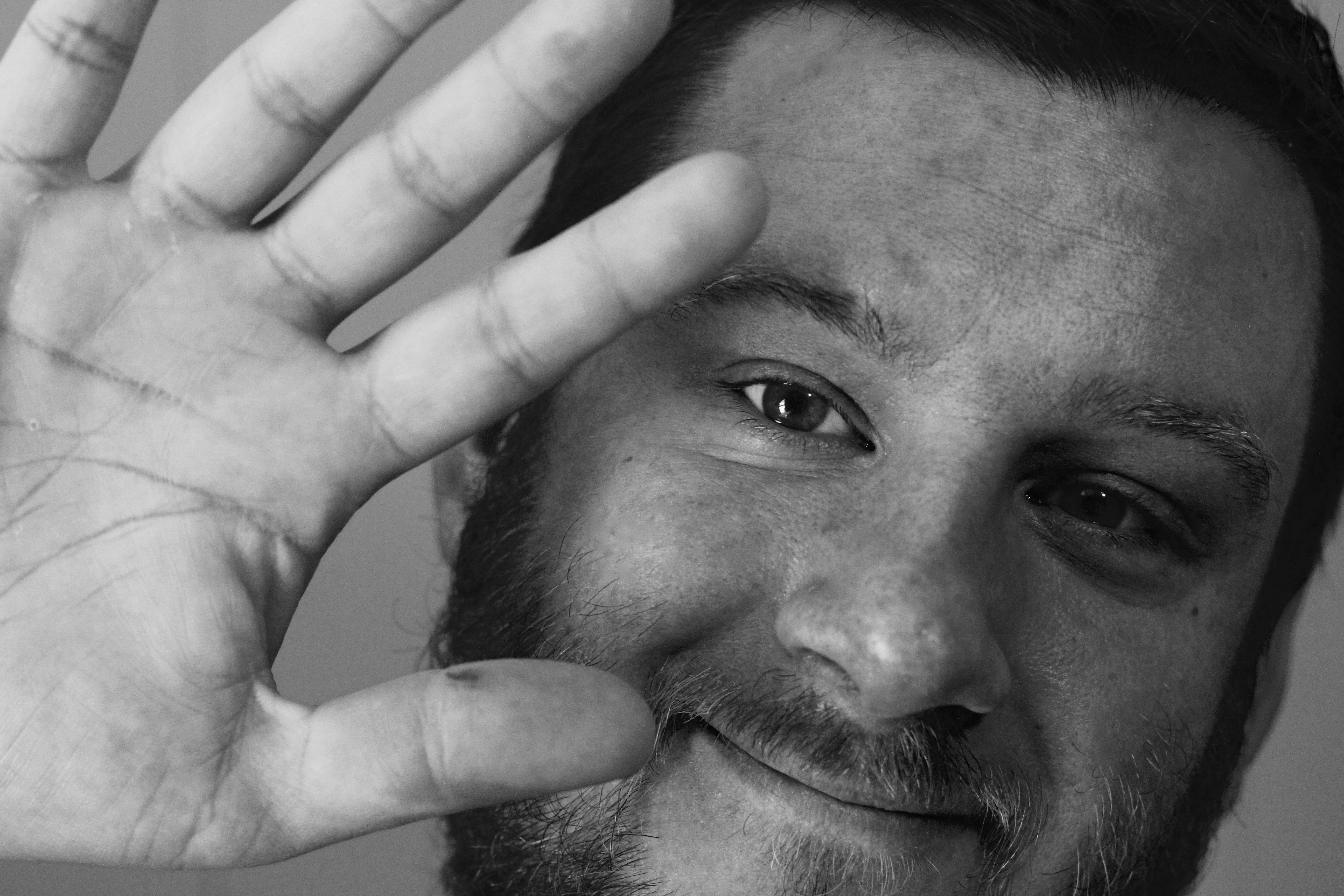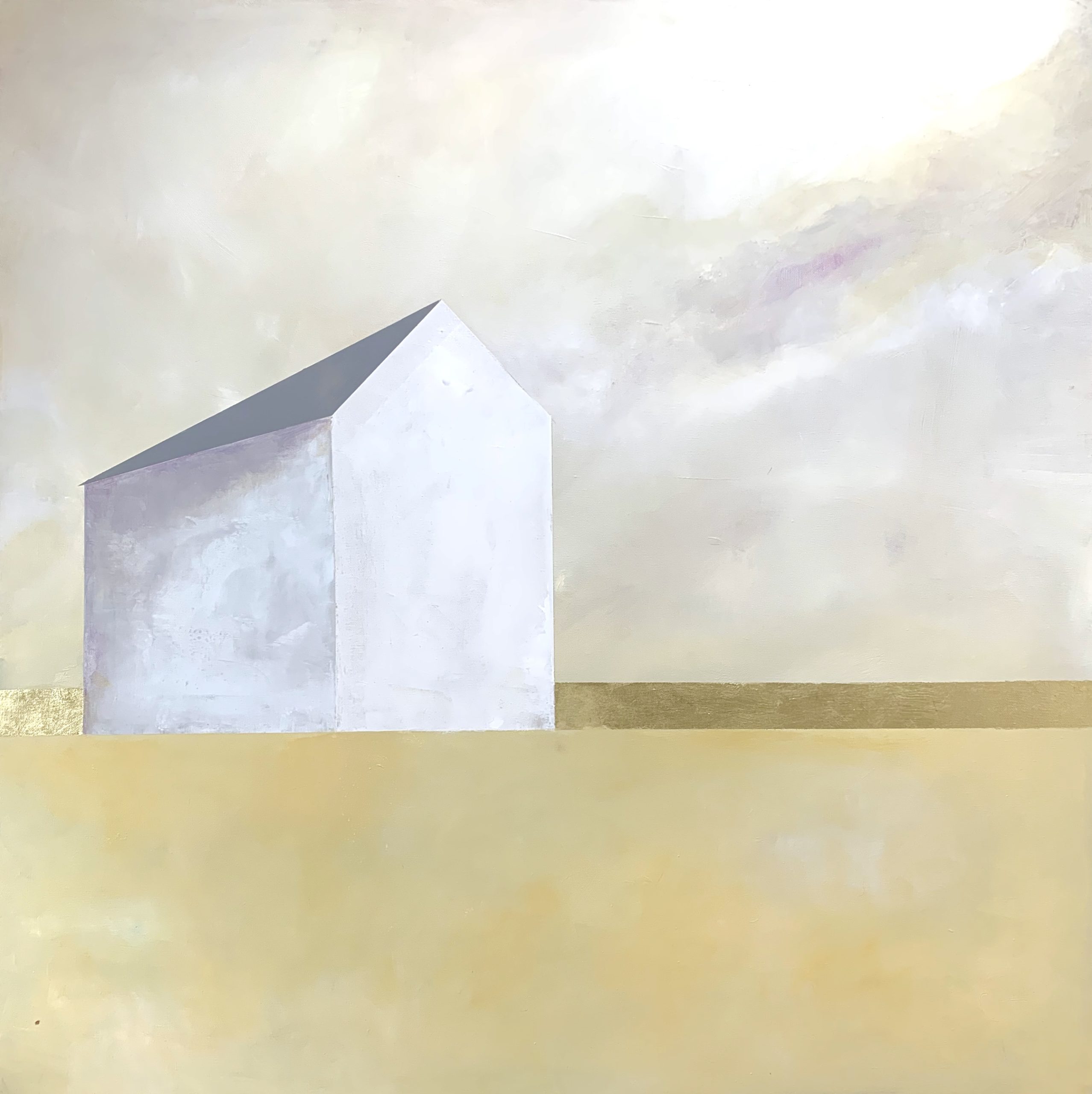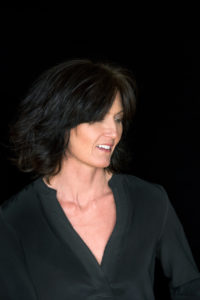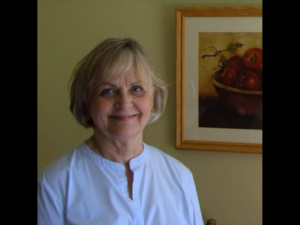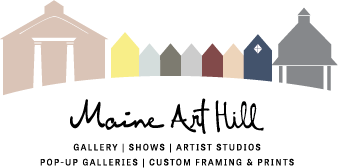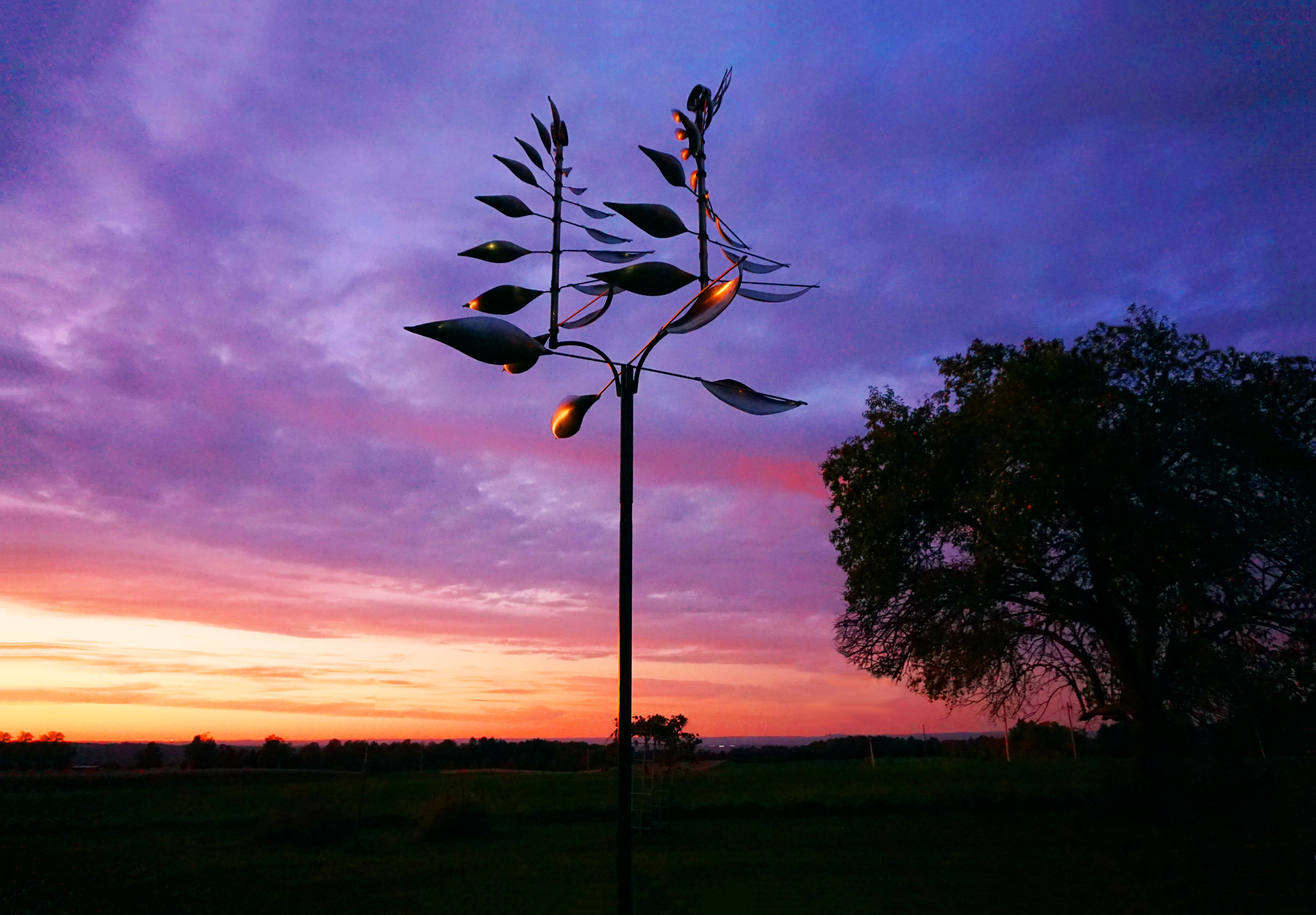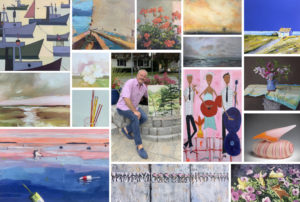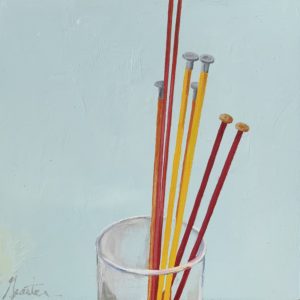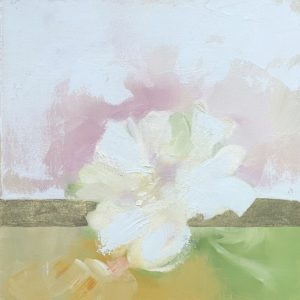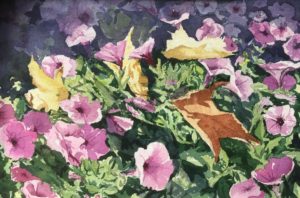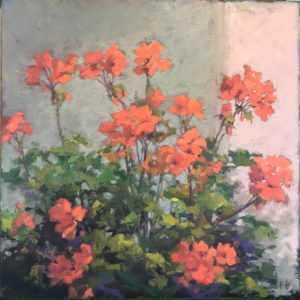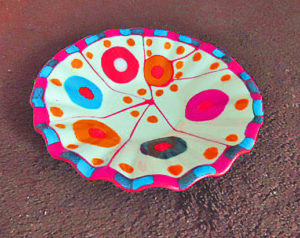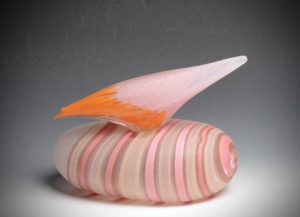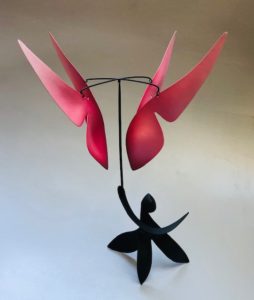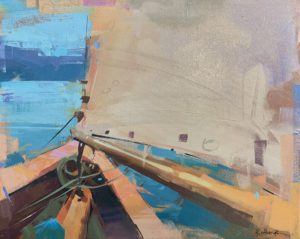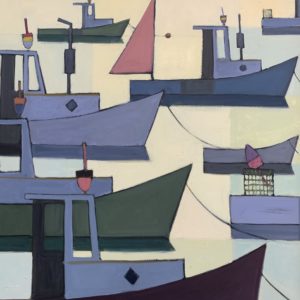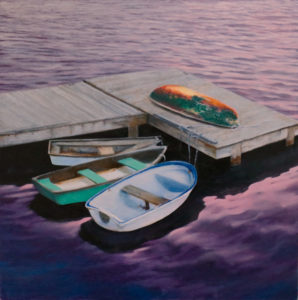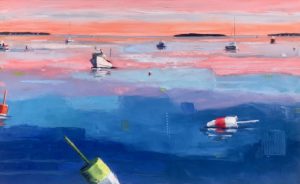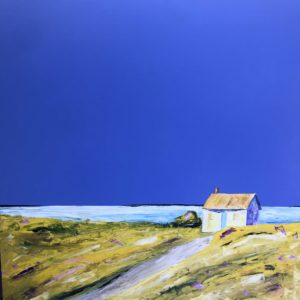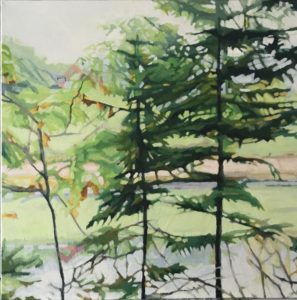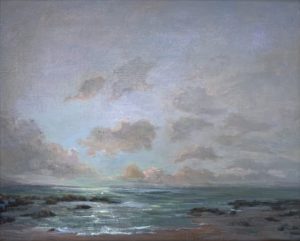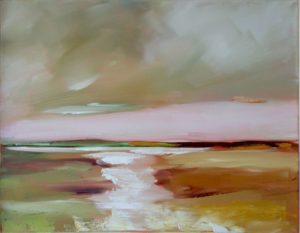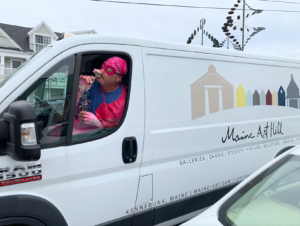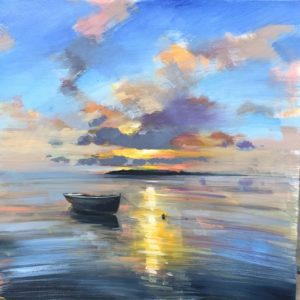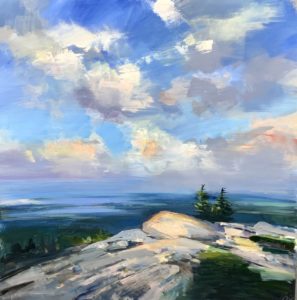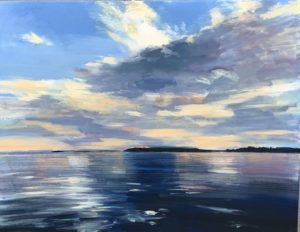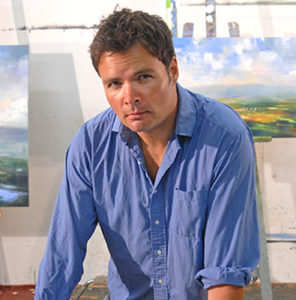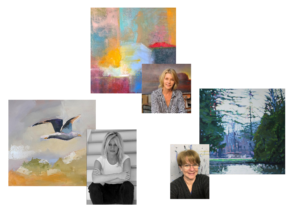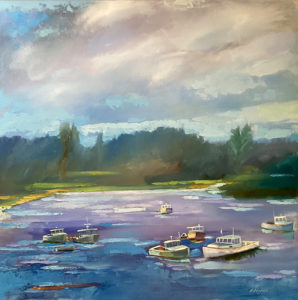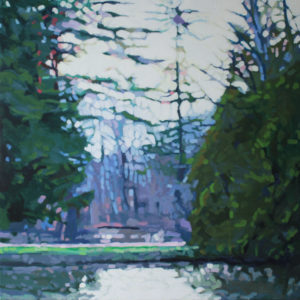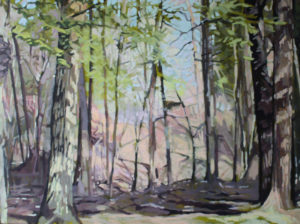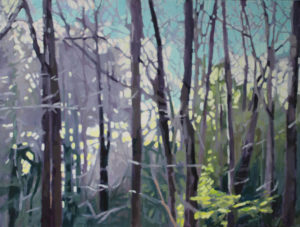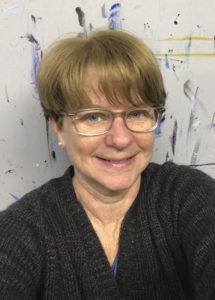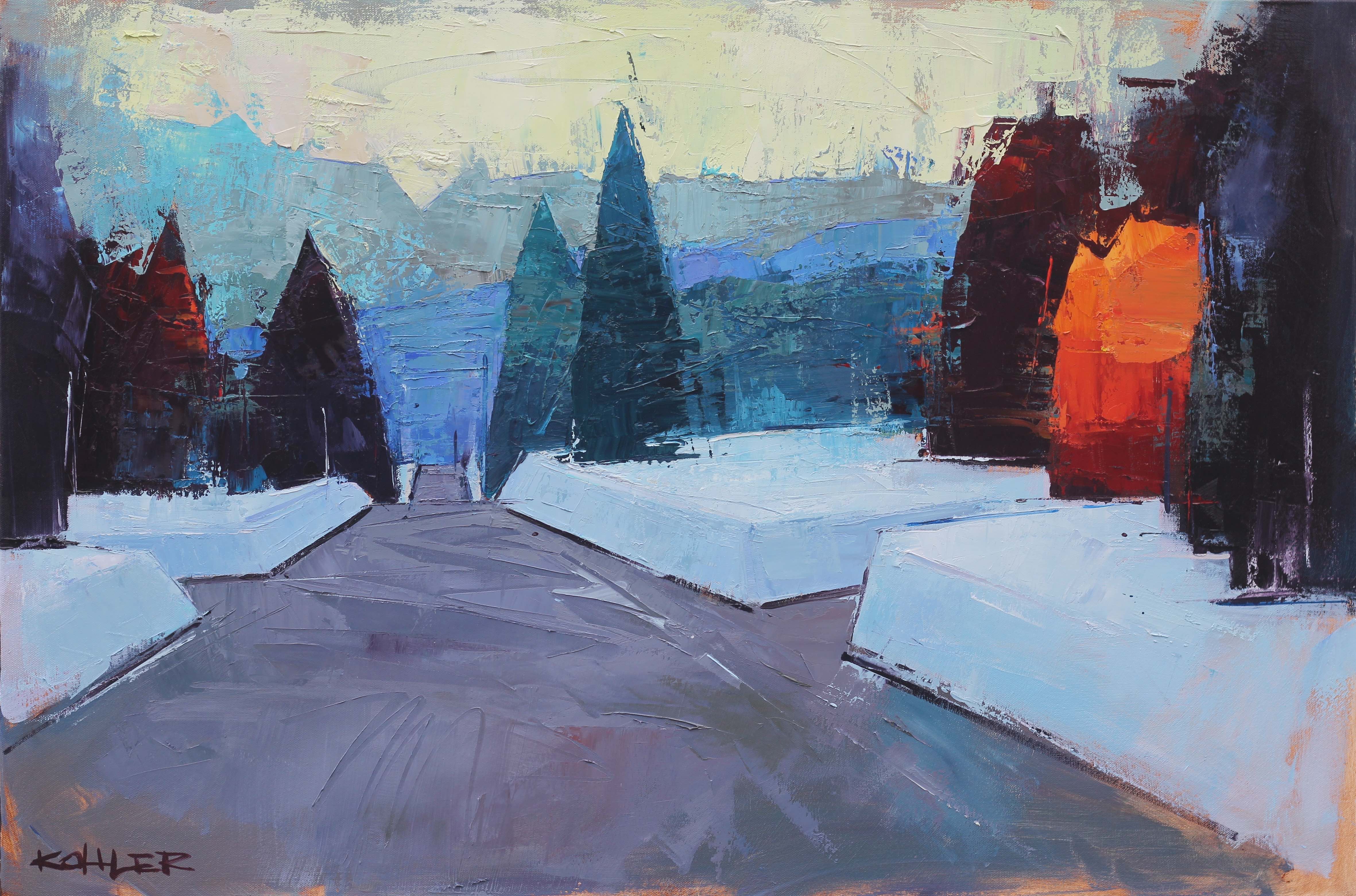
Ryan Kohler is a young local artist who recently joined Maine Art Hill. He has several pieces at The Gallery on Western Ave and has already sold. Check out his Artist Page to see all of his available work or come in for a visit. We are open at 10 am every day.
As with all new artists, we love to take a few minutes to share a bit about them. It is important to us for our clients and visitor to have insight into an artist when you are viewing their work.
Insights from Artist Ryan Kohler
“I always say that I’ve been drawing and painting ever since I was old enough to hold a crayon. Luckily, my parents and grandparents were always super encouraging about my interest in art. They even let me paint right on my bedroom walls and ceilings,” shares Kohler. “Growing up, I used to try and replicate my favorite album covers and t-shirts. It taught me a lot about design and laid the groundwork for some pretty cool paintings later on.”
Kohler has a BA in Art with a concentration in drawing from the University of Maine at Augusta. Throughout his college years, many mediums were practiced but one continually came out ahead.
“While studying for my art degree, I was subjected to all sorts of torturous experimentations with various mediums,” Kohler jokes. “I knew that whatever avenue I chose to pursue in art, drawing would still be a relevant skill, so I took just about every art class there was, sometimes unwillingly, but painting was always my favorite.”
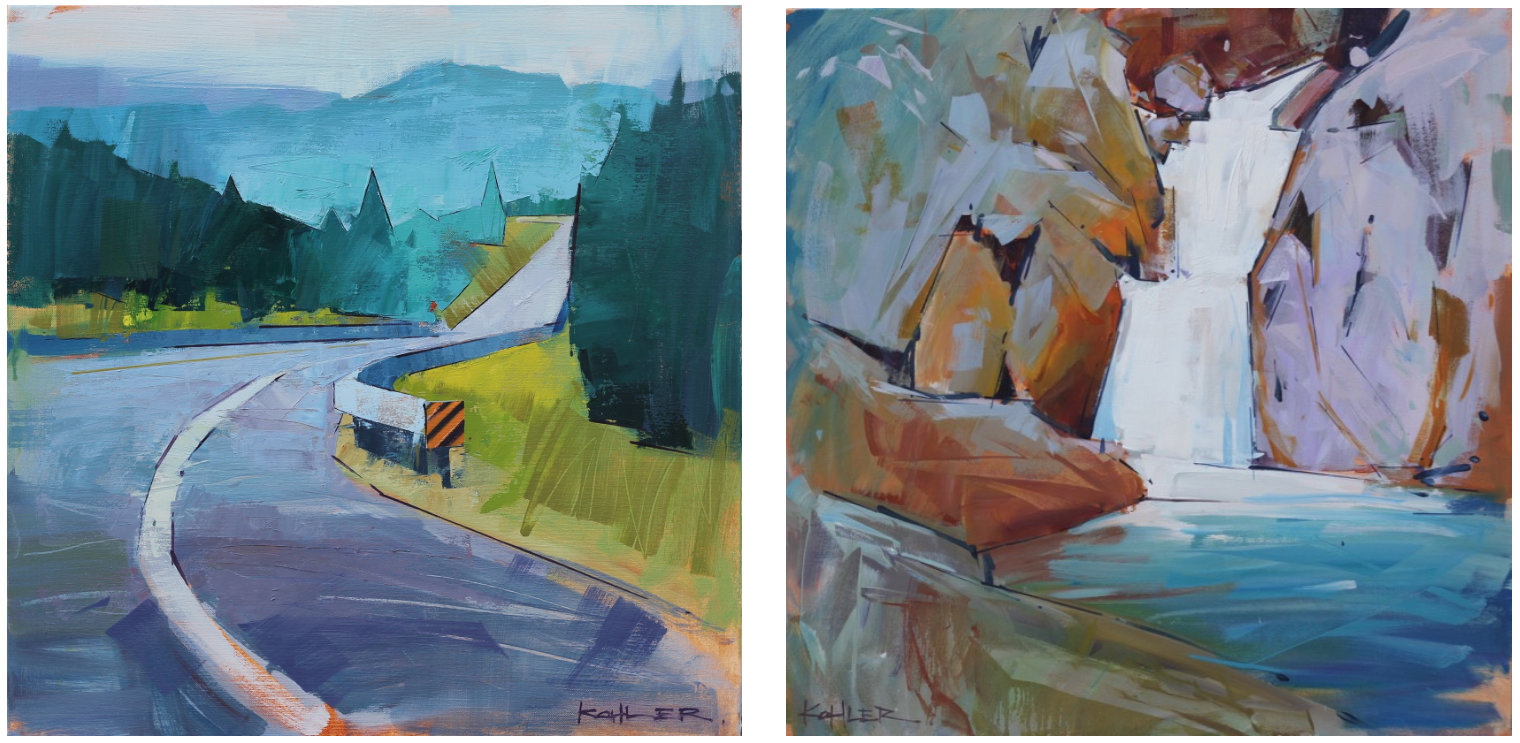
If painting was his preferred outlet, acrylic was his first love. He grew up painting in acrylic and used it for most of his college work.
“Acrylic has its charms, but my favorite painters were always working in oils. It wasn’t long before I taught myself to work in oils. I consider myself pretty handy with both mediums now, but I’ve recently discovered a great way to combine them,” shares Kohler.
The first layer or two of his current work is acrylic. He works quickly and easily. It comes naturally. Once the painting is in a “good place”, he switches to oils and continues building texture, adding and removing loosely applied layers of color before finally defining focal points of the painting with crisp, graphic lines. The end result being something different and interesting.
When it comes to inspiration, Kohler is more of a classic.
“I actively seek inspiration. I do not wait for a ‘divine visionary moment’ or anything like that. Just plain old research,” says Kohler. “I’m constantly seeking out new favorite artists, looking for new subjects to paint, or aimlessly driving and walking around hunting for what excites me.”
Lastly, we wanted to share a bit of insight as to how Kohler himself views art and how to process his own work.
“Everyone steps to a painting with their own approach, but initially, I like to view a painting as an abstract work first. I look at the composition, paint texture, general shapes and colors, and temperature first before inspecting the recognizable imagery,” explains Kohler. “I want the viewer to see my work as a precarious mix of careful observation and spontaneous mark-making. My painting seems to work best when I can find the most entertaining ratio of the two.”
However, it is this last piece of advice for anyone coming to see his work that may be the most beneficial.
“If it matches the couch, great. It’s not that art isn’t allowed to match the furniture,” says Kohler. “However, f you’re that worried about it, get a new damn couch. Either way, be sure the most important question is being asked. ‘Does the painting bring you joy?’”
